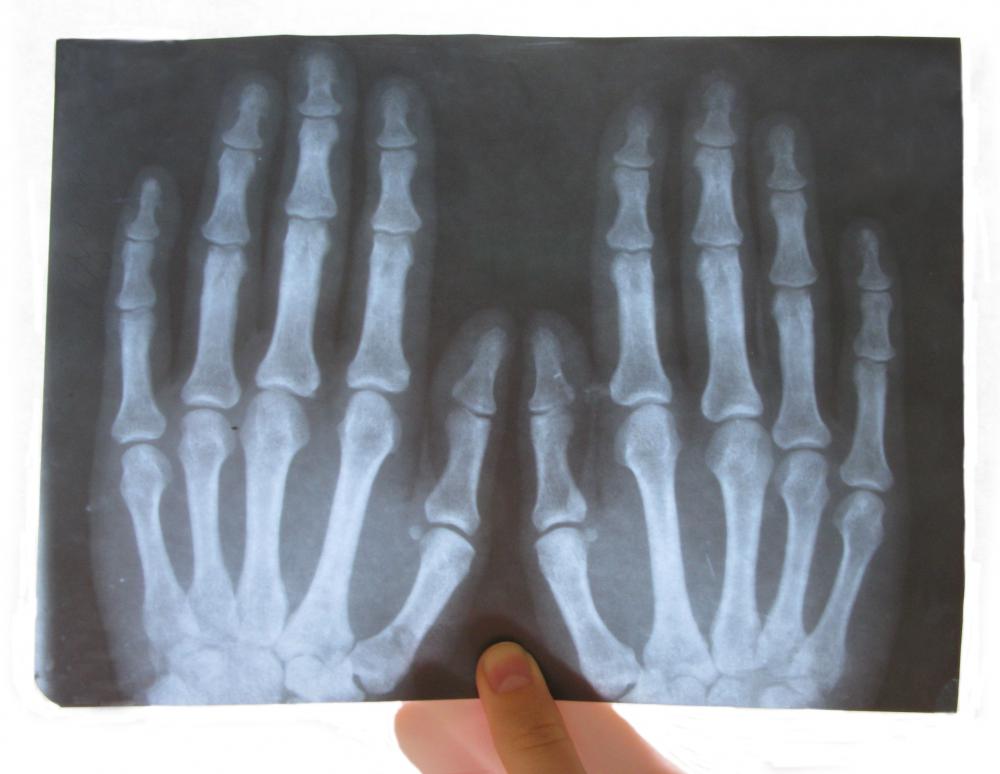At TheHealthBoard, we're committed to delivering accurate, trustworthy information. Our expert-authored content is rigorously fact-checked and sourced from credible authorities. Discover how we uphold the highest standards in providing you with reliable knowledge.
What is an Oblique Fracture?
A fracture is a break in a bone, and is classified by a number of factors, including the fracture line, or where the break occurs in relation to the axis of the bone. The axis is the direction of the bone’s shaft. Fracture lines can be linear, transverse, longitudinal, spiral and oblique. An oblique fracture is a break which has a fracture line that runs diagonal to the bone shaft.
Spiral fractures are similar to oblique fractures because they also have a break line which is diagonal to the shaft, and are often initially misdiagnosed, though the differences can be seen in an X-ray. Both breaks occur at a slant, but the oblique fracture tends to be a straight break while the spiral fracture has a pattern similar to a corkscrew. Spiral breaks are rare and generally occur when a part of the body, such as the foot, is trapped and the adjoining bone, such as the leg, is twisted.

Much more common than a spiral fracture, an oblique fracture is generally caused by a slanted blow to the bone. This kind of break can occur throughout the body, but is most frequently found in the long bones of the arm and leg: the humerus, or upper arm; the femur, or thigh bone; and the tibia and fibula in the lower leg. This type of fracture can occur as a result of a sports injury or a fall down a flight of stairs.

Treatment depends upon several factors, including the alignment of the bone segments, the damage to the surrounding tissues and the general stability of the bone. As long as the skin is not broken, most fractures are initially treated with a splint which stabilizes the area until the swelling is reduced. Once the splint is removed, a cast may be applied if the bones are aligned well and there appears to be minimal damage to the surrounding area. If the bones ends protrude from the skin, a condition known as a compound fracture, then surgery is required to clean up the area and reset the bones. Compound breaks expose the bones to possible infection, so antibiotics are typically prescribed.

Surgery may also be used to set the fracture if there are concerns that the bone which has been broken may not remain stable long enough to heal. In such instances, a surgeon may install rods, pins or plates to hold the pieces together. Depending upon the severity of the break, these appliances may be left in permanently or surgically removed once the bone has healed.

Symptoms of bone fractures include pain, bruising and swelling. In some cases, the fact that a break exists is apparent, but in many instances an oblique fracture is not diagnosed until an X-ray, computed tomography (CT) or magnetic resonance imaging (MRI) has been performed. Prompt treatment is necessary to assure the bones align properly, prevent infection in the bone, and to limit damage to surrounding nerves, tissues and blood vessels. Length of recovery depends of several factors including the severity of the break, the age of the patient and the overall health of the body.
AS FEATURED ON:
AS FEATURED ON:















Discussion Comments
The doctor said it was because the break was so severe, but I was still frustrated at how slowly my arm healed.
Post your comments